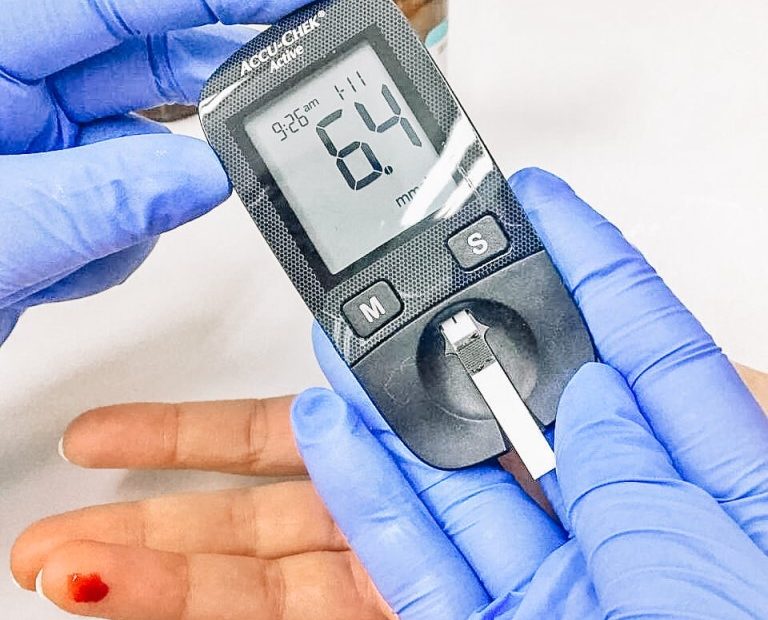Diabetes is an insidious disease: despite the fact that it is not contagious, millions of people get sick in the world. Fortunately, the probability of diabetes mellitus can be calculated and the necessary measures can be taken. Even if the disease could not be avoided, you can live until a very old age.
This disease is directly related to the level of sugar in the blood. Where does sugar come from? It enters the body together with carbohydrate food. Beta cells of the pancreas are sensitive to an increase in the concentration of glucose in the blood — they respond to changes by releasing the hormone insulin. Insulin transports glucose to the cells that need it-first of all, to brain cells and red blood cells. After the distribution of sugar, its level in the blood decreases, and we feel a decline in strength. If you eat something sweet, insulin will be released, glucose will enter the cells, but in just an hour we will want to eat again. Forcing the pancreas to constantly produce insulin, we risk our own health. Do you really have to give up sweets? Do not worry — sugar may be present in the daily diet, but in small quantities: 50 g for women and 60 g for men. This includes not only “pure” sugar, but also hidden. If you do not limit yourself and constantly eat food rich in fats and simple carbohydrates, you can disrupt the work of the pancreas. Beta cells will simply stop producing insulin in an amount sufficient to process all the glucose entering the body. Thus, the concentration of sugar in the blood will gradually increase. This will not only negatively affect the figure, but also lead to more serious consequences.
Diabetes mellitus of the first type
The causes of type 1 diabetes are diverse: heredity, infectious diseases, taking hormonal drugs. A person becomes insulin-dependent, which forces him to completely change his usual lifestyle: control blood glucose levels, inject insulin, adhere to a strict diet and regularly exercise. It is not surprising that some people lose the ability to enjoy life. Fortunately, most of the patients still find the strength to live on and enjoy every day they have lived.
Diabetes mellitus of the second type
This type is more common than the first. 90% of all diabetics suffer from type 2 diabetes mellitus, or insulin-dependent diabetes. It is known that the concentration of glucose in the blood increases in two cases: either insulin is produced in insufficient quantities, or the cell receptors become insensitive to it — insulin resistance occurs. This threatens to increase blood pressure, the development of atherosclerosis and the occurrence of a stroke. If you do not monitor your health, prediabetes will gradually develop into diabetes, and then the patient will have to take medications, exercise and follow a strict diet, as well as undergo training in the “school of diabetes” and measure blood sugar levels daily with a glucometer.
It is believed that the first sign of diabetes is increased thirst. So many of us live quietly: there is no thirst — there is no diabetes. This is a huge mistake. Endocrinologists say that diabetes is insidious. For many years, he may not reveal himself in any way at all. But one day a person begins to have strange health problems: wounds do not heal, vision falls, teeth become loose
Complications of diabetes mellitus
Acute and chronic complications of the disease are separated. Acute complications develop quickly, and require urgent hospitalization. These include the following states:
- Hypoglycemia. In this condition, the glucose level is sharply reduced. It occurs with an overdose of insulin, untimely eating, physical overstrain. The patient experiences hunger, a feeling of trembling in the hands, dizziness, sweating, aggression. Then consciousness is disturbed.
- Ketoacidosis. With it, the glucose level increases. It does not enter the cells and accumulates in the blood. The condition is manifested by a decrease in appetite, dry skin, thirst. The smell of acetone comes from the patient. There is confusion, drowsiness.
Hyperosmolar coma. It is characterized by an increase in blood glucose with general dehydration of the body. - Lactate-acidotic coma. The condition occurs in the elderly in the presence of disorders of the respiratory and cardiovascular systems due to oxygen starvation.
Patients with signs of these pathological conditions need immediate medical care.
With late complications, lesions of the vascular and nervous system are observed. Diabetic angiopathy is a massive vascular lesion. It applies to vessels of any caliber. Microangiopathies cause the appearance of diabetic nephropathy and retinopathy. Macroangiopathies affect the vessels of the heart, brain and arteries of the lower extremities.
Diagnosis of diabetes mellitus
If this disorder is suspected, the following studies are prescribed:
- blood glucose level;
- urine analysis for glucose and ketone bodies;
- glycosylated hemoglobin test;
- C-peptide in the blood;
- test (determination of glucose tolerance).
To detect complications, prescribe: ultrasound scanning of the kidneys, brain EEG rheoencephalography, rheovasography of the vessels of the legs.
Diabetes mellitus is considered a serious disease. If left untreated, serious life-threatening complications develop. If you experience symptoms of increased sugar, you should consult a doctor and not self-medicate.

